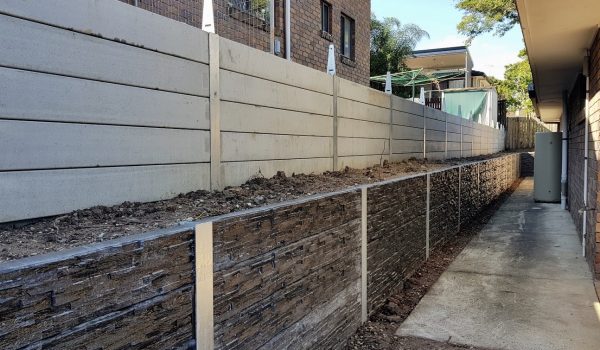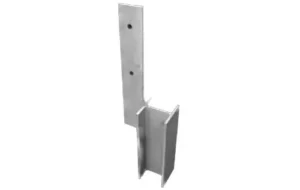Retaining walls are essential in landscaping, serving the dual purpose of providing structural support and enhancing the aesthetic appeal of outdoor spaces. When selecting the suitable material for your retaining walls, several options exist. This comprehensive guide will compare concrete sleepers with other popular retaining wall materials to help you make an informed decision.
We’ll explore their features, benefits, durability, installation process, and suitability for different applications. Additionally, we’ll highlight the significance of incorporating steel posts in conjunction with concrete sleepers for added stability and longevity.
Understanding Retaining Walls and Their Importance
Retaining walls are designed to hold back soil and prevent erosion, creating level areas and maximising usable landscape space. They are crucial in supporting slopes, terracing, and defining boundaries. Retaining walls are essential in areas with uneven terrain or where soil erosion is a concern. They provide structural support and help with drainage and soil stabilisation.
Introducing Concrete Sleepers: Strength, Durability, and Versatility
Concrete sleepers are robust and versatile components widely used in retaining wall construction. Composed of reinforced concrete, they offer exceptional strength and durability. Concrete sleepers are engineered to withstand heavy loads and resist the pressure the retained soil exerts.
They are resistant to weathering, rot, and pests, making them a long-lasting choice for retaining walls. Concrete sleepers come in various sizes, shapes, and finishes, allowing customisation to suit different design preferences and applications. They can be textured to resemble natural stone or timber, providing aesthetic appeal without sacrificing durability.
READ: Enhancing Your Outdoor Oasis: Creative Ideas for Decorating with Concrete Sleepers
The Benefits of Using Concrete Sleepers
Concrete sleepers offer numerous benefits, making them popular for retaining walls and garden edging. Let’s explore some of the key advantages:
- Strength and Durability: Concrete sleepers are known for their exceptional strength and durability. They can withstand heavy loads and resist the pressure exerted by soil, ensuring long-lasting stability and structural integrity.
- Low Maintenance: Concrete sleepers require minimal maintenance compared to other materials such as timber or natural stone. They do not require staining, sealing, or regular upkeep, saving you time and effort in the long run.
- Versatility in Design: Concrete sleepers come in various sizes, shapes, and finishes, providing flexibility in design options. Concrete sleepers can be customised to match your aesthetic preferences, whether you prefer a modern, textured look or a classic appearance resembling natural stone.
- Cost-Effectiveness: Concrete sleepers offer a cost-effective solution for retaining walls. They are more affordable than natural stone and require less maintenance than timber, making them a budget-friendly choice that doesn’t compromise quality.
- Weather Resistance: Concrete sleepers are designed to withstand harsh weather conditions, including heavy rainfall, extreme temperatures, and UV exposure. They resist rot, warping, and fading, ensuring longevity even in challenging environments.
- Eco-Friendly Option: Concrete sleepers are made from locally sourced materials, reducing the carbon footprint associated with transportation. They can also be recycled at the end of their lifespan, contributing to sustainability and environmental responsibility.
- Ease of Installation: Installing concrete sleepers is relatively straightforward, especially when combined with steel posts for added stability. The installation process can be efficient and hassle-free with proper preparation and professional guidance.
- Compatibility with Steel Posts: Concrete sleepers work seamlessly with steel posts to create a robust and reliable retaining wall system. Retaining wall steel posts provide additional reinforcement and prevent lateral movement, ensuring the structure’s overall stability.
Comparing Concrete Sleepers with Timber: A Battle of Durability and Maintenance

Timber has long been popular for retaining walls due to its natural beauty. However, concrete sleepers provide several advantages over wood. Concrete sleepers are highly durable and resistant to rotting, warping, and termite damage, which are common issues with wood.
Unlike timber, concrete sleepers require minimal maintenance, eliminating the need for regular staining or sealing. They offer a longer lifespan and retain their structural integrity over time, making them a cost-effective option in the long run.
Comparing Concrete Sleepers with Natural Stone: Balancing Aesthetics and Practicality
Natural stone is renowned for its timeless beauty and elegance. While natural stone retains its aesthetic appeal, concrete sleepers offer comparable durability and strength at a more affordable price. Concrete sleepers can mimic the look of natural stone, offering a cost-effective alternative without compromising on quality. They are available in a wide range of textures, colours, and patterns, allowing you to achieve the desired aesthetic for your retaining wall while enjoying the benefits of concrete’s durability and low maintenance.
Comparing Concrete Sleepers with Interlocking Blocks: Ease of Installation and Design Flexibility

Interlocking blocks are popular for retaining walls due to their ease of installation and versatility. However, concrete sleepers provide similar advantages while offering superior durability and strength. Concrete sleepers can withstand heavy loads and provide long-lasting stability for retaining walls. They are available in various sizes and shapes, allowing for flexible design options. The installation process for concrete sleepers involves preparing the base, placing the sleepers, and securing them with steel posts for added stability.
The Role of Steel Posts in Retaining Walls: Enhancing Stability and Longevity

Steel posts play a vital role in supporting concrete sleepers and ensuring the overall stability and integrity of the retaining wall structure. Steel posts offer exceptional strength and longevity, making them an ideal complement to concrete sleepers. They provide additional reinforcement and prevent lateral movement of the sleepers, especially in areas with significant soil pressure. Steel posts are available in different sizes and profiles to accommodate various retaining wall designs and load requirements.
Considering Environmental Factors and Sustainability
When comparing retaining wall materials, it’s essential to consider their environmental impact and sustainability. Concrete sleepers are manufactured using locally sourced materials and can be recycled at the end of their lifespan, making them a sustainable choice. They require minimal maintenance, reducing the use of chemicals or resources over time. Additionally, incorporating steel posts further enhances the sustainability of the retaining wall, as steel is highly recyclable.
How Do I Know Which Retaining Wall Material is Best For My Project?
Here are some essential factors to consider when determining which option is best for the retaining wall you are building:
- Purpose and Function: First, think about what you want your retaining wall to achieve. Are you looking to add visual appeal, prevent soil erosion, or level uneven ground? Knowing the purpose will guide your material selection.
- Aesthetic Appeal: Consider the overall look you desire for your outdoor space. Each material has its own charm, whether it’s the natural beauty of timber, the timeless elegance of natural stone, or the versatility of concrete sleepers. Choose a material that complements your landscape and personal style.
- Durability and Longevity: It’s crucial to assess how well the material will withstand the specific conditions in your area. Factors like weather exposure, soil type, and potential impacts should be taken into account. For a strong and long-lasting solution, consider options like concrete sleepers and steel posts.
- Maintenance Requirements: Consider the amount of time and effort you’re willing to invest in maintaining your retaining wall. Timber may require regular staining and sealing, while materials like concrete sleepers and natural stone generally require less upkeep. Choose a material that aligns with your maintenance preferences.
- Cost and Budget: Evaluate your budget and the long-term cost implications of each material. While some options may have higher upfront costs, they could provide savings in the long run due to their durability and lower maintenance requirements. Consider the overall value and lifespan of your chosen material.
- Seek Expert Advice: Don’t hesitate to consult with a professional retaining wall expert. They can assess your specific needs, evaluate site conditions, and offer personalised recommendations. Their expertise will help you make an informed decision that suits your unique project requirements.
Remember, there’s no one-size-fits-all solution when it comes to retaining wall materials. By carefully considering your needs, seeking expert advice, and weighing the various factors, you can confidently select the material that will create a beautiful, functional, and enduring retaining wall for your outdoor space.
Conclusion
After carefully comparing concrete sleepers with other retaining wall materials, it’s evident that they offer a winning combination of strength, durability, versatility, and aesthetics. Concrete sleepers, in conjunction with steel posts, create stable and long-lasting retaining walls that withstand the test of time. Consider the specific requirements of your project, such as load capacity, design preferences, and environmental factors, when making your choice. By selecting concrete sleepers and steel posts, you can create a functional and visually appealing outdoor space that enhances the overall beauty and value of your property.




